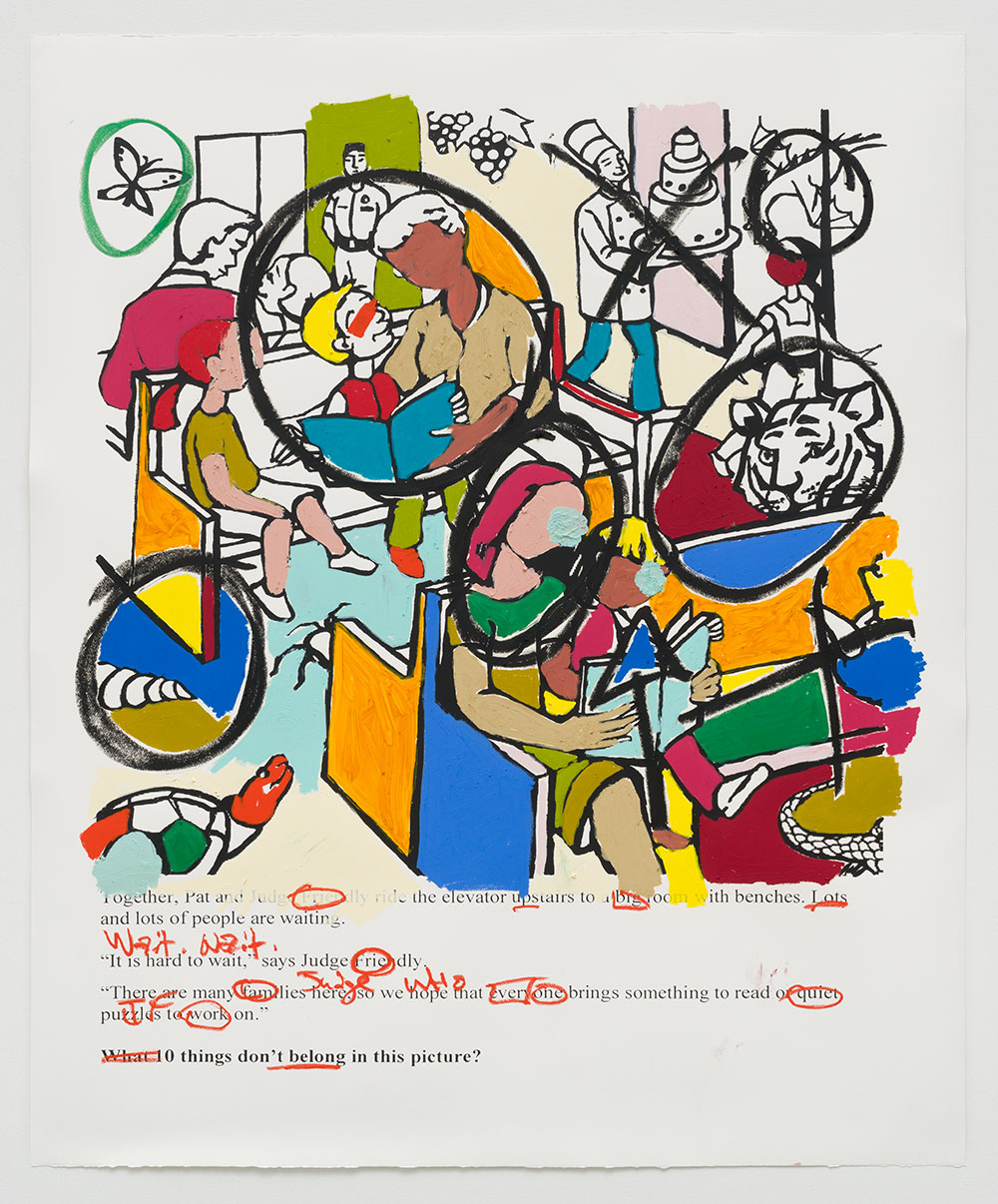
Sable Elyse Smith, Coloring Book 76, 2021. Screenprinting ink, oil pastel, and oil stick on paper. 60 × 50 inches (152.4 × 127 cm). Promised gift of Steve Corkin and Dan Maddalena. Courtesy the artist and JTT, New York. © Sable Elyse Smith
Sable Elyse Smith is an interdisciplinary artist, writer, and educator who employs a range of media to make legible quotidian forms of violence that go largely unseen. Through paintings, videos, sculptures, photographs, and text-based works, Smith maps these forms of “ordinary violence” through larger social infrastructures, such as the carceral system and its traumatic effects on families and children, and in the ways that broader ideas of innocence and criminality are frequently racialized.
In 2015, Smith found a coloring book on the ground of 125th Street in Harlem. Attracted by the strange images on the coloring book’s pages, Smith brought it back to her studio, where it stayed for three years before she started making paintings from its pages. The artist learned that this book was intended for children in the waiting rooms of prisons, courts, or other social services environments. She begins to make her own work by screen printing individual pages from the book at an enlarged scale, before coloring by hand using pastels or oil sticks, attempting to simulate the untutored intensity of childlike mark making. Coloring Book 76 shows a waiting room in which adults and children sit on benches, quietly reading. All around them are images of things that do not belong there—a tiger, a dragon, a pastry chef, and so on. On the bottom of the page is a brief text that includes statements from an unseen character named Judge Friendly, who acknowledges how difficult it is to wait. Children using the book are encouraged to identify the ten things that do not belong, as they themselves are subtly instructed to wait quietly in a similar setting. Smith uses scale shifts to exaggerate the incongruity of the scene, and her use of color is often disarmingly unnatural. Her interventions in these found pages signal the presence of—and resistance to—the carceral system in the lives of some children. The work draws our attention to the ways that, in Smith’s words, “the systems we live in do not afford Black people access to the status of child or the state of childhood.”